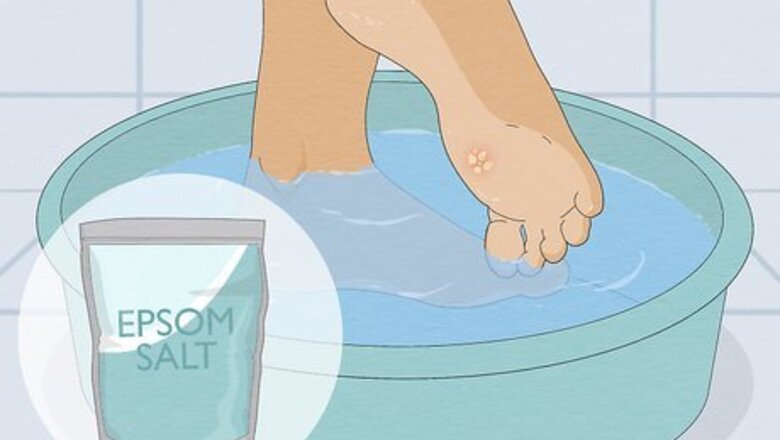
views
X
Trustworthy Source
Mayo Clinic
Educational website from one of the world's leading hospitals
Go to source
Soak your feet for 15-20 minutes to soften the skin.
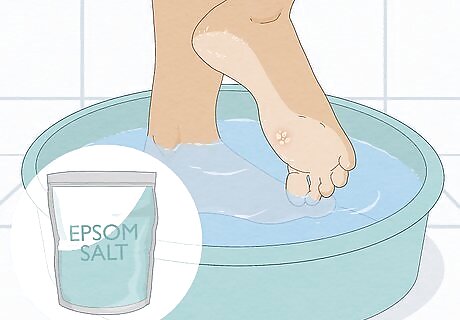
Warts are more difficult to treat if they're covered with hard, dead skin. The pressure of walking on your feet causes a thickened layer of skin to build up over the plantar wart. Soaking your feet in warm water makes this excess skin easier to remove. You can try adding Epsom salts or baking soda to the water—2 home remedies to soften and get rid of calluses.
Use a pumice stone to slough off the callus.

Lightly rub the calloused skin to remove it. You can buy a pumice stone at a pharmacy or wherever personal care products are sold—they're relatively inexpensive. After soaking your feet and drying them thoroughly, simply rub the pumice stone over the dry skin to exfoliate it. Don't do this if you have diabetes or peripheral neuropathy. Because of your reduced sensitivity, you might end up damaging the surrounding tissue. Keep in mind the pumice stone won't completely remove the plantar wart, since it's mostly under your skin. However, it helps get rid of the dry skin that's built up over top of the wart, which makes the wart easier to treat and less painful in the meantime. Once you use a pumice stone on a plantar wart, only use it for that purpose. If you also use it on healthy skin, you risk spreading the virus that causes plantar warts. EXPERT TIP Chris M. Matsko, MD Chris M. Matsko, MD Family Medicine Physician Dr. Chris M. Matsko is a retired physician based in Pittsburgh, Pennsylvania. With over 25 years of medical research experience, Dr. Matsko was awarded the Pittsburgh Cornell University Leadership Award for Excellence. He holds a BS in Nutritional Science from Cornell University and an MD from the Temple University School of Medicine in 2007. Dr. Matsko earned a Research Writing Certification from the American Medical Writers Association (AMWA) in 2016 and a Medical Writing & Editing Certification from the University of Chicago in 2017. Chris M. Matsko, MD Chris M. Matsko, MD Family Medicine Physician Never pick at a wart or attempt to cut it out by yourself. A pumice stone is the recommended option if you want to try removing it naturally.
Apply a thin layer of salicylic acid lotion or gel.
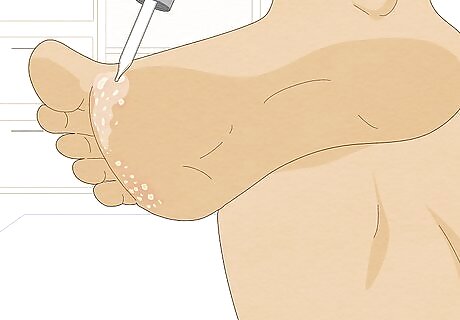
Buy salicylic acid lotion or gel at your local pharmacy. Wash your feet, soak them, then exfoliate the hard skin over the plantar wart with a pumice stone. This allows the salicylic acid to penetrate the plantar wart. Allow the lotion or gel to dry completely before you cover your foot or walk around. Salicylic acid is most commonly found in anti-acne treatments, but there are some products made specifically to treat warts. The salicylic acid products for feet typically have a higher percentage of salicylic acid, so you'll probably have better results with them.
Cover the wart to prevent it from spreading.
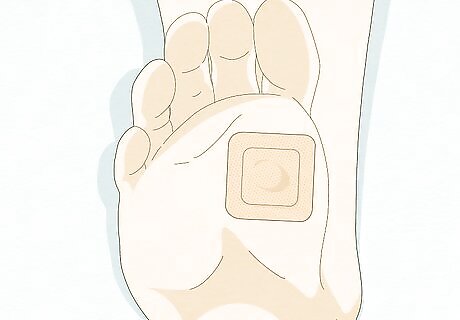
Use a regular bandage to cover the wart, especially if you're barefoot. Covering the wart keeps it from spreading the virus to other parts of your foot. It also helps you avoid spreading the virus to others through indirect contact. It can be difficult to keep a bandage on the bottom of your foot, so you'll need to check it periodically and replace it if it starts to come off. You might also try using silver duct tape to cover the wart. It might sound ridiculous, and scientists aren't quite sure why this might work, or even if it does. But it's so low-tech and inexpensive, it's worth a try!
Try over-the-counter wart removers.
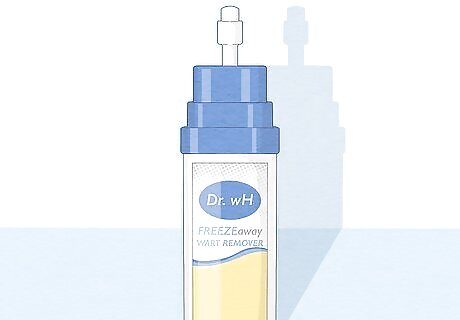
Buy nonprescription freezing medicine at any pharmacy. Brands include Compound W Freeze Off and Dr. Scholl's Freeze Away. In general, these don't get as cold as cryotherapy done by a medical professional and work less than half the time. However, if you don't want to seek medical treatment, they might be worth a try. Many wart removers are very flammable. Don't use them around an open flame or any heat source, such as a curling iron.
Protect your feet to keep the virus from spreading.

Wear sandals around swimming pools and in locker rooms. The virus that causes plantar warts thrives in moist areas. Any time you're in a moist environment, cover the soles of your feet. Do what you can to keep your feet clean and dry. That might mean washing your feet more than twice a day—just make sure they're completely dry before you put on socks or shoes. While you're dealing with a plantar wart, try to wear open shoes or sandals that won't trap moisture. If that's not an option for you, rotate your shoes so that the insides have time to dry out between wears.
See your doctor if self-care treatments aren't working.
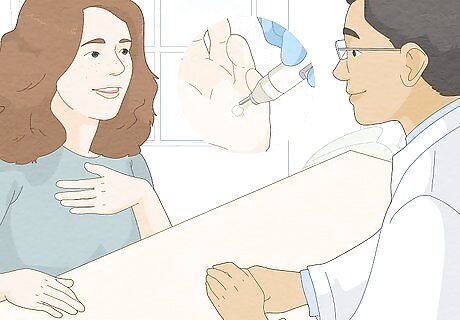
Tell your doctor how long you've had the wart and how you've treated it. They'll likely ask you questions about whether it's changed in size or appearance and might refer you to a specialist (a podiatrist or dermatologist) to have it tested. Then, they'll recommend an appropriate course of treatment. Medical treatments include: Prescription-strength salicylic acid medication Cryotherapy (freezing the wart off using liquid nitrogen) Laser treatment HPV vaccine Surgery



















Comments
0 comment